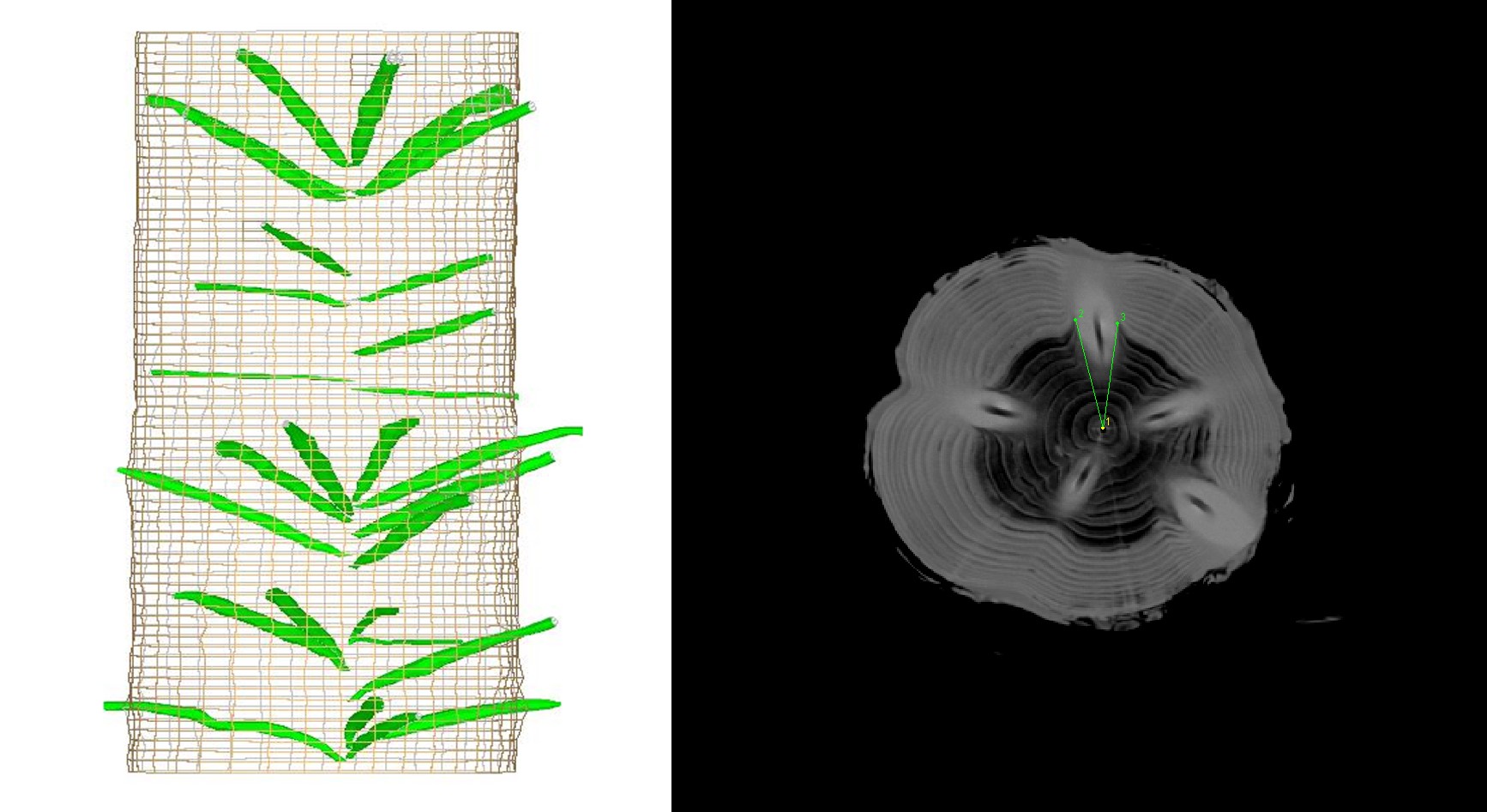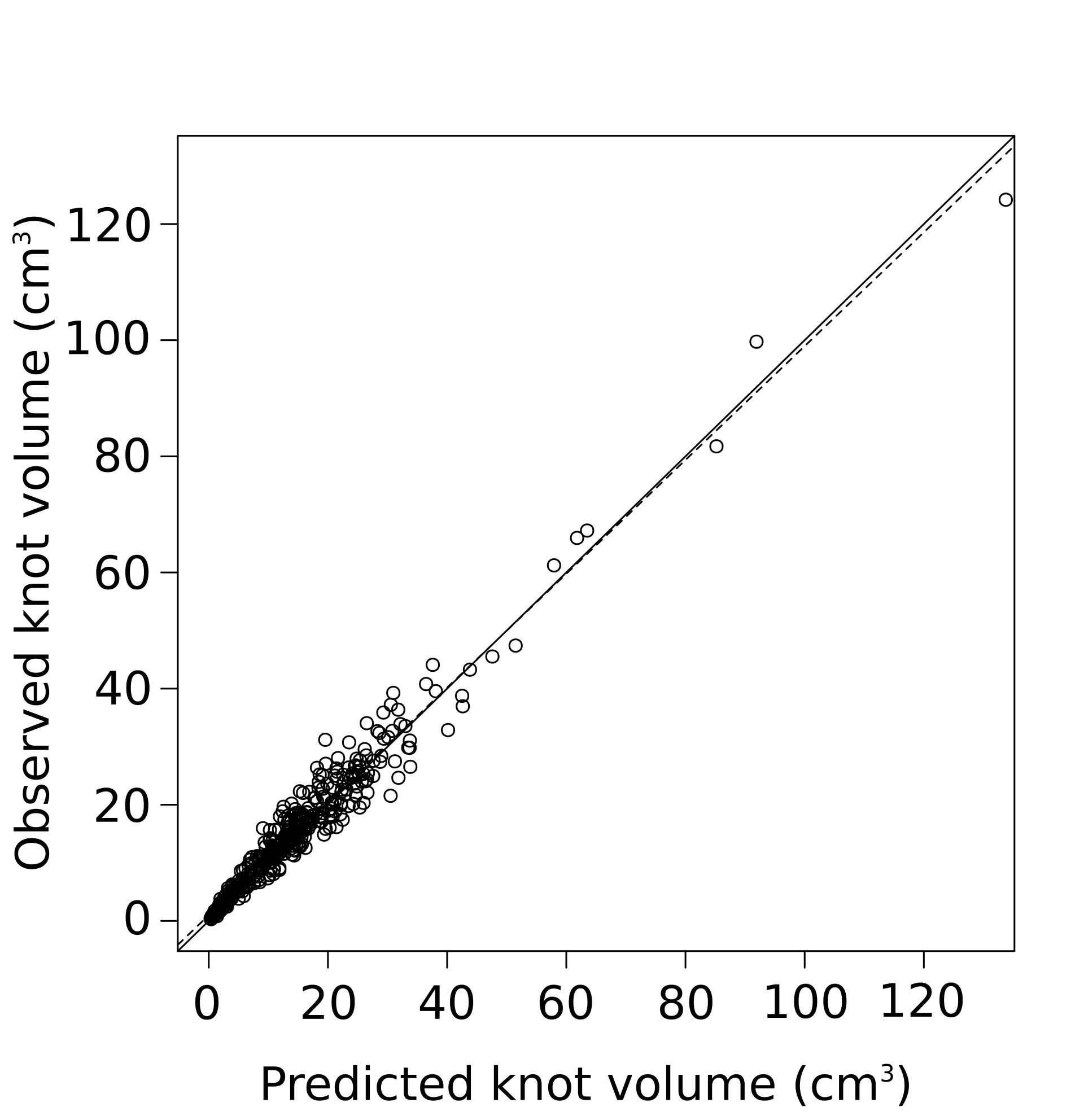Summary
Summary
Using X-ray computed tomography, or CT scanning, coupled with image analysis, this project aims to model knot size and shape within a tree stem based on the tree’s external profile.

Research objectives
Knots are a critical factor in timber strength and value. Being able to estimate the effects of forest management decisions on the volume of shape of knots within the tree stems would be highly advantageous. Following in the footsteps of French and Canadian studies we have applied CT scanning techniques using Scottish-grown Sitka spruce.
Our primary objective is to use the data to model internal knot geometry and volume. External branch external characteristics will then be linked to the model so that the volume, shape and location of knots within trees can be predicted based on external observations.

Results so far
- Data acquisition: Using the Scottish Rural University College’s CT Scanning Service (more conventionally used on sheep!) we have imaged knots within a number of trees and (using the “Gourmand” plugin for Image J software) we are able to create full 3-D stem reconstructions in a visualisation program developed by LERFoB (France).
- Modelling knot geometry and volume: Advance regression techniques have allowed us to model average knot trajectories and the evolution of knot diameter across the stem radius, which in turn will enable assessments of average knot volume within a stem.
- Linking branch characteristics to knot geometry and volume: The external insertion diameter of branches was used to assess the knot-specific components of the model and predict knot-specific geometry and volume. Our volume predictions proved unbiased and largely more precise than any other existing model for knot volume (97% of the variability explained).
- Dissemination: The methods developed for knot-specific predictions are non-trivial approaches to the knot problem and represent novel contributions to the field of timber properties. A scientific article introducing these methods and results is currently under review in an international scientific journal.

Funders and partners
The project is co-funded by FC Scotland, now Forestry and Land Scotland, FC England, now Forestry England and Natural Resources Wales, via the Forest Products Research Programme (Wood and Timber Properties).
